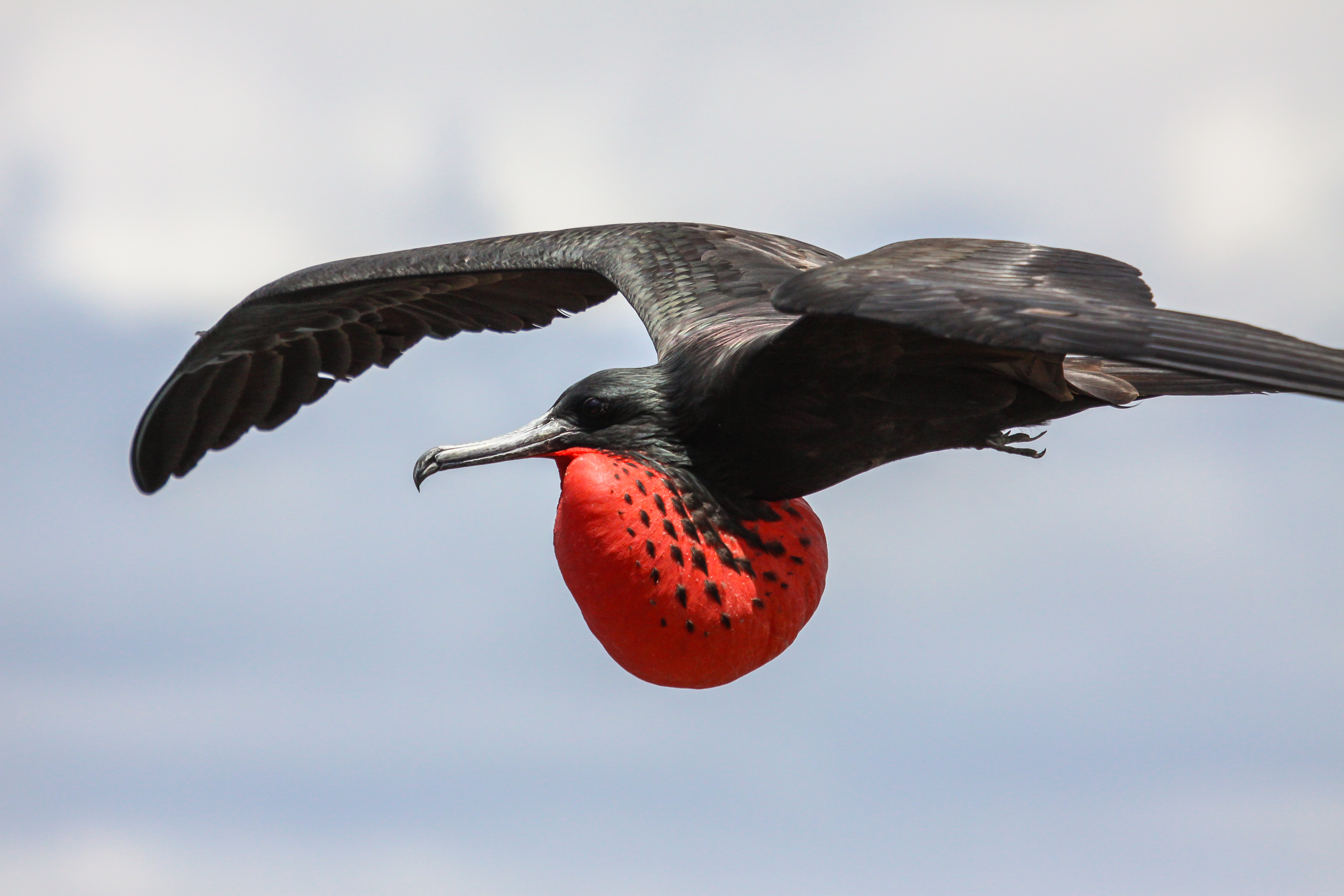
At first glance, you might not notice anything unusual about the Magnificent Frigatebird other than its massive size. After observing their behavior for a period of time though, especially that of the males during mating season, you’re likely to notice just how unique these birds are.
Magnificent Frigatebirds are not migratory, but rather they are present year-round in the southern United States, Mexico, and the Caribbean. They are the largest species of both frigatebirds and seabirds, measuring up to three feet long with a seven to eight foot wingspan. Both males and females have a long bill with a hooked tip, forked tails, and are primarily black in color, though females have a white chest and males have a bright red throat pouch, known as a gular sac, which is used exclusively for mating purposes. Outside of the breeding season, it fades to orange and is hardly visible.
Because they are incredibly lightweight, Magnificent Frigatebirds can use the wind and natural air currents to do most of the work for them while they are aloft, often for long periods of time. In order to see just how far these birds could fly (and for how long), several were given satellite tags by researchers. In addition to one soaring higher than an altitude of 12,000 feet, another soared for a distance of forty miles without a single wing flap, while yet another one covered a little over 300 miles in a single day, and flew continuously for several weeks afterwards.
Though they have webbed feet like other seabirds, Magnificent Frigatebirds do not have waterproof feathers and therefore cannot swim or dive for their food. Instead, they are known for chasing other seabirds down and forcing them to give up their food. Sometimes they will even resort to hitting birds in the stomach until they regurgitate something they’ve already swallowed. This behavior has earned them the nickname of both “man-o-war bird” and “pirate of the sea,” though harassing other birds for their food is only a supplement to their own hunting. While they primarily eat small fish, squid, jellyfish, and crustaceans, they’ve also been known to take both young turtles and birds, as well as eggs of other species.
Breeding takes place year-round and depends on climatic conditions, most commonly occurring off the coast of the Florida Keys and along the United States gulf coast. When a male is ready to mate, it will inflate its gular sac until it looks like a large red balloon while vibrating partially spread wings and swiveling back and forth until a female flying overhead chooses him as her mate. The nest is then usually built in a clump of mangrove with sticks that the male will find and bring to the female, where she will build the nest by herself. Magnificent Frigatebirds only lay one egg at time, which is incubated for fifty days by both parents. Once the chick is born, one parent always stays in the nest to protect it from predators. When the chick is twelve weeks old, the male will leave the nest to molt and mate again, while the mother stays behind and continues to feed the chick until it reaches one year old, even though chicks begin to fly on their own around the five or six month mark. Because of the length of time spent incubating, protecting, and feeding their young, Magnificent Frigatebirds have the longest parental care known among all birds.
If you live along the southern United States coast, you’ve likely already seen Magnificent Frigatebirds in action. For those that live further inland or not near the coast at all, make sure you keep an eye out for these strange and fascinating birds the next time you head to a southern beach for vacation. You might even get lucky and spot a male Magnificent Frigatebird with an enlarged gular sac if it’s breeding season!